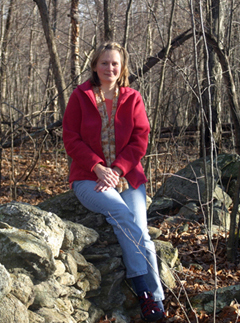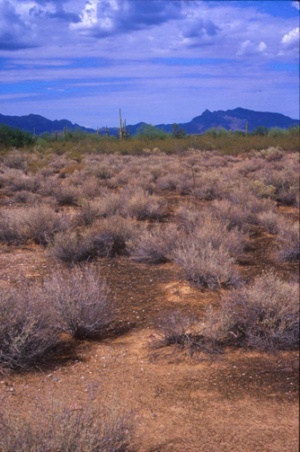Difference between revisions of "Louise A. Lewis"
LouiseLewis (Talk | contribs) |
LouiseLewis (Talk | contribs) |
||
| Line 12: | Line 12: | ||
__NOEDITSECTION__ | __NOEDITSECTION__ | ||
==Research Interests and Selected Publications== | ==Research Interests and Selected Publications== | ||
| + | <span style="font-size: large">Desert Algae: Diversity and Physiology <br/></span> | ||
| + | Most species of green algae occur in aquatic or marine habitats, but there are many diverse green algae that live in terrestrial habitats such desert microbiotic crust communities. My work in North American and South African arid habitats reveals that desert green algae have multiple evolutionary origins and they are physiologically distinct from aquatic relatives. <br/> | ||
| + | |||
| + | *[http://hydrodictyon.eeb.uconn.edu/bcp/ Biotic Crust Project] - A web site and relational database designed initially to disseminate results of an NSF-funded (Biotic Systems and Inventories) project to document the diversity of green algae, cyanobacteria, lichens and bryophytes of the desert crust communities of the western United States. Now, additional projects are being served at this site.<br/> | ||
| + | *Gray, D. W., Z. G. Cardon and L. A. Lewis (2007) Photosynthetic recovery following desiccation of desert green algae (Chlorophyta) and their aquatic relatives. Plant Cell and Environment 30: 1240-1255.*Lewis, L. A. and P. O. Lewis (2005) Unearthing the molecular phylodiversity of desert soil green algae (Chlorophyta). Systematic Biology 54: 936-947. | ||
| + | *Lewis, L. A., and V. R. Flechtner (2004) Cryptic species of ''Scenedesmus'' (Chlorophyta) from desert soil communities of western North America. Journal of Phycology 40: 1127-1137.<br/> | ||
| + | |||
<span style="font-size: large">Evolution of green algae<br/></span> | <span style="font-size: large">Evolution of green algae<br/></span> | ||
*Lewis, L. A. (2007) Chlorophyta on land. Independent lineages of green eukaryotes from arid lands. In: J. Seckbach (ed.) ''Extremophilic Algae, Cyanobacteria and non-photosynthetic Protists: From Prokaryotes to Astrobiology''. Kluwer Academic Publishers, Dordrecht. | *Lewis, L. A. (2007) Chlorophyta on land. Independent lineages of green eukaryotes from arid lands. In: J. Seckbach (ed.) ''Extremophilic Algae, Cyanobacteria and non-photosynthetic Protists: From Prokaryotes to Astrobiology''. Kluwer Academic Publishers, Dordrecht. | ||
| Line 17: | Line 24: | ||
*Lewis, L. A. and R. M. McCourt (2004) Green algae and the origin of land plants. American Journal of Botany 91: 1535-1556. | *Lewis, L. A. and R. M. McCourt (2004) Green algae and the origin of land plants. American Journal of Botany 91: 1535-1556. | ||
*Shoup, S. and L. A. Lewis (2003) Polyphyletic origin of parallel basal bodies in swimming cells of chlorophycean green algae (Chlorophyta). Journal of Phycology 39: 789-796.<br/> | *Shoup, S. and L. A. Lewis (2003) Polyphyletic origin of parallel basal bodies in swimming cells of chlorophycean green algae (Chlorophyta). Journal of Phycology 39: 789-796.<br/> | ||
| − | + | ||
| − | + | ||
| − | + | ||
| − | + | ||
| − | + | ||
| − | + | ||
| − | + | ||
<span style="font-size: large">Symbiotic green algae<br/></span> | <span style="font-size: large">Symbiotic green algae<br/></span> | ||
*Lewis, L. A. and G. Muller-Parker (2004) Phylogenetic placement of "Zoochlorellae" (Chlorophyta), algal symbiont of the temperate anemone ''Anthopleura'' ''elegantissima''. Biological Bulletin 207: 87-92.<br/> | *Lewis, L. A. and G. Muller-Parker (2004) Phylogenetic placement of "Zoochlorellae" (Chlorophyta), algal symbiont of the temperate anemone ''Anthopleura'' ''elegantissima''. Biological Bulletin 207: 87-92.<br/> | ||
Revision as of 02:48, 17 January 2008
Associate Professor
Department of Ecology and Evolutionary Biology
University of Connecticut
Storrs, CT 06269-3043
office: 200 Pharmacy/Biology Building
voice: +1 860-486-6723
fax: +1 860-486-6364
email: louise.lewis@uconn.edu
Research Interests and Selected Publications
Desert Algae: Diversity and Physiology
Most species of green algae occur in aquatic or marine habitats, but there are many diverse green algae that live in terrestrial habitats such desert microbiotic crust communities. My work in North American and South African arid habitats reveals that desert green algae have multiple evolutionary origins and they are physiologically distinct from aquatic relatives.
- Biotic Crust Project - A web site and relational database designed initially to disseminate results of an NSF-funded (Biotic Systems and Inventories) project to document the diversity of green algae, cyanobacteria, lichens and bryophytes of the desert crust communities of the western United States. Now, additional projects are being served at this site.
- Gray, D. W., Z. G. Cardon and L. A. Lewis (2007) Photosynthetic recovery following desiccation of desert green algae (Chlorophyta) and their aquatic relatives. Plant Cell and Environment 30: 1240-1255.*Lewis, L. A. and P. O. Lewis (2005) Unearthing the molecular phylodiversity of desert soil green algae (Chlorophyta). Systematic Biology 54: 936-947.
- Lewis, L. A., and V. R. Flechtner (2004) Cryptic species of Scenedesmus (Chlorophyta) from desert soil communities of western North America. Journal of Phycology 40: 1127-1137.
Evolution of green algae
- Lewis, L. A. (2007) Chlorophyta on land. Independent lineages of green eukaryotes from arid lands. In: J. Seckbach (ed.) Extremophilic Algae, Cyanobacteria and non-photosynthetic Protists: From Prokaryotes to Astrobiology. Kluwer Academic Publishers, Dordrecht.
- McManus, H. A. and L. A. Lewis (2005) Systematics, morphological variation and implications for colony-form evolution in the family Hydrodictyaceae (Sphaeropleales, Chlorophyta). Phycologia 44: 582-595.
- Lewis, L. A. and R. M. McCourt (2004) Green algae and the origin of land plants. American Journal of Botany 91: 1535-1556.
- Shoup, S. and L. A. Lewis (2003) Polyphyletic origin of parallel basal bodies in swimming cells of chlorophycean green algae (Chlorophyta). Journal of Phycology 39: 789-796.
Symbiotic green algae
- Lewis, L. A. and G. Muller-Parker (2004) Phylogenetic placement of "Zoochlorellae" (Chlorophyta), algal symbiont of the temperate anemone Anthopleura elegantissima. Biological Bulletin 207: 87-92.
Phylogeny of basal green plants
- Lewis, L. A., B. D. Mishler and R. Vilgalys (1997) Phylogenetic relationships of the liverworts (Hepaticae), a basal embryophyte lineage, inferred from nucleotide sequence data of the chloroplast gene, rbcL. Molecular Phylogenetics and Evolution 7: 377-393.
- Mishler, B. M., L. A. Lewis, M. A. Buchheim, K. S. Renzaglia, D. J. Garbary, C. F. Delwiche, F. W. Zechman, T. S. Kantz and R. L. Chapman (1994) Phylogenetic relationships of the "green algae" and "bryophytes". Annals of the Missouri Botanical Garden 81: 451-483.
Beyond greens
- Haugen, P., D. Bhattacharya, J.D. Palmer, S. Turner, L.A. Lewis, and K.M. Pryer (2007) Cyanobacterial ribosomal RNA genes with multiple, endonuclease-encoding group I introns. BMC Evolutionary Biology 7: 159.
- Hershkovitz, M. A. and L. A. Lewis (1996) Deep-level diagnostic value of the rDNA-ITS region. Molecular Biology and Evolution 13: 1276- 1295.
- Hanelt, B., D. van Schyndel, C.M. Adema, L. A. Lewis, and E.S. Loker (1996) The phylogenetic position of Rhopalura opiocomae (Orthonectida) based on 18S ribosomal RNA sequence data. Molecular Biology and Evolution 13: 1187-1191.
- Wawrzyniak, L.A. and R.A. Andersen (1983) Silica-scaled Chrysophyceae from North American boreal forest regions in northern Michigan, U.S.A. and Newfoundland, Canada. Nova Hedwigia 41: 127-145.
 |
 |

|
Courses
Spring 2008
- During alternate spring semesters (next in 2008) I will co-teach Evolution of Green Plants with Dr. Bernard Goffinet.
Fall 2008
- I also teach Biology of the Algae (co-listed as EEB 290 and EEB 390) in alternate fall semesters (2006, 2008...).
Spring 2009
- I am involved in teaching introductory biology for majors, Biology 108, usually in alternate spring semesters (2009, 2011...). This course web site is accessed using Vista.

